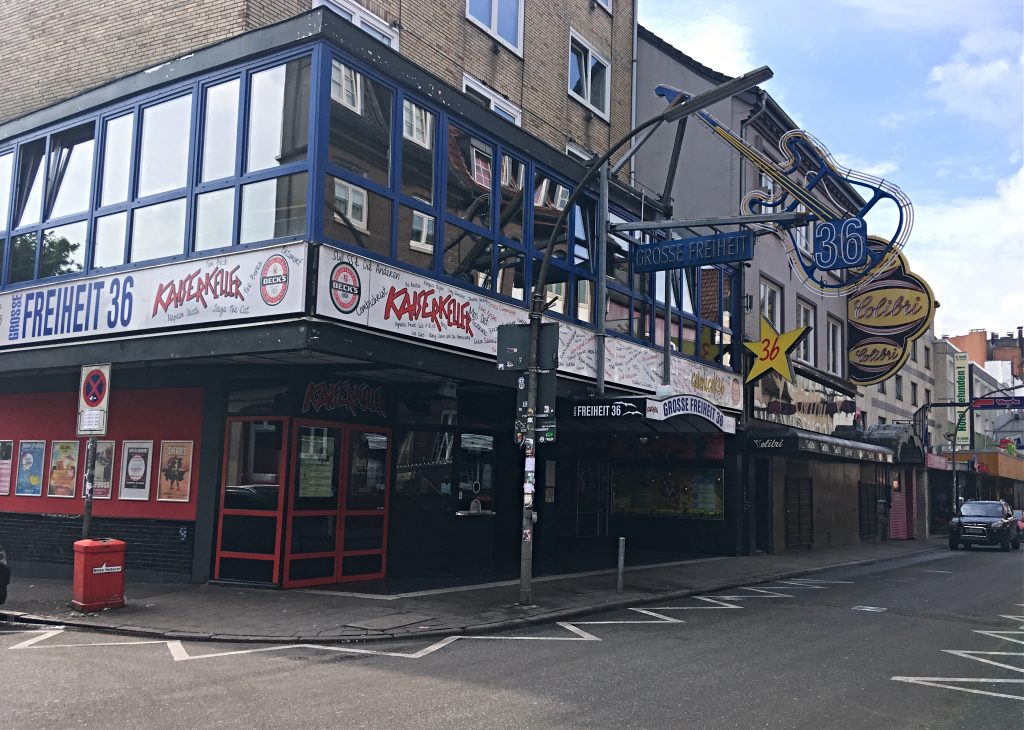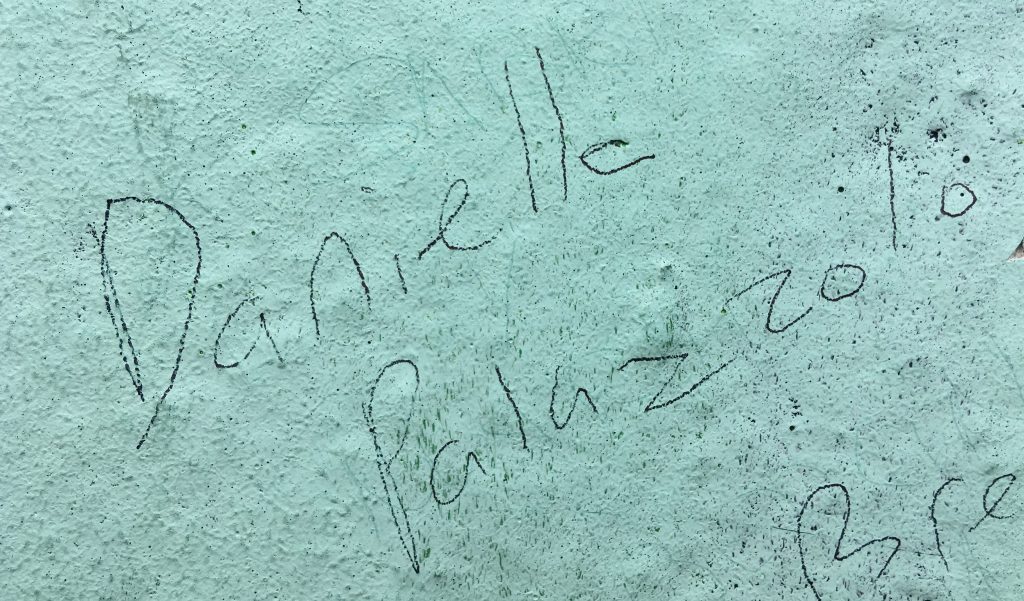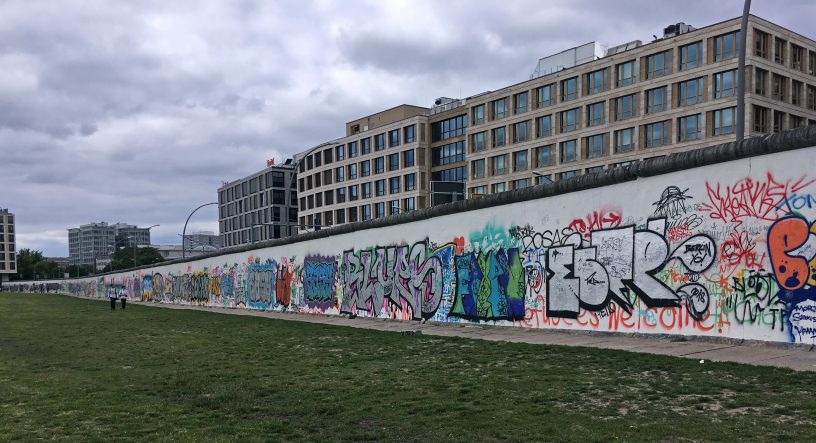For as long as I can remember, I have always wanted to go to Europe; Rutgers Camden gave me that opportunity. In the summer of 2019, I traveled with the Rutgers Learning Abroad program to Germany for a ten-day trip. We went to Cologne, Hamburg, and Berlin. The express purpose of the trip was to learn about urban navigation and gentrification, but I learned a lot about traveling, German culture and history, and becoming independent.
My Learning Abroad journey started in the Campus Center in the fall of 2018. The Learning Abroad offices were holding a fair, and as I perused the various options, I landed on Germany. As a student who studies World War II, Germany naturally appealed to me. I wanted to see the sites I had read about in texts. I was also learning German at the time, so it felt like the perfect fit.
The application process, though, was not as simple as I thought it would be. It was not a matter of just signing up. There were only a certain number of spots, and there were even fewer spots for grad students. To increase my chances, I applied almost immediately after the fair and had to wait several weeks for a definite answer. Typically, with Learning Abroad, the applications are due between November and December depending on the program. Alas, I got a spot. I had to then think about cost. The trips range from about $2,000-$3,800, but there are scholarships available. I was always prepared for the costliness of the trip, and the representatives of the program were transparent about the costs of the trip from the beginning. They even gave us advice about budgeting. And so, I never felt totally blind-sided when I saw it in black and white.

The Rutgers Learning Abroad program has a specific format. Students take a course here and then do a trip either in the spring or the summer. In my case, we went in the summer. Each trip is centered around a different area of study. Mine was urban studies, specifically urban navigation and gentrification, so most of our readings and assignments pertained to those issues. As part of our trip-prep, we had to learn how to navigate German cities, so, we looked at maps of the cities to get a general sense of the layout. We were given navigation exercises; we were given a location and expected to map out a route to get there.
Finally, after months of anticipation and preparation, I jetted off to Deutschland. The trip began in Berlin where I had my first true taste of Europe. German cities are covered in graffiti, and no photos or articles could do it justice. Graffiti and street art were on every corner. Lamp posts were covered with hand-made stickers. Benches were tagged with personalized logos. Unlike in America, Germans do not view street art as a negative thing; to them, it is art. Graffiti was often a political expression as well as an artistic one. Germans often express political slogans and ideas through graffiti. Perhaps Berlin’s most notable piece of street art is the Berlin Wall itself. The East Side Gallery, a one-mile strip of the Berlin Wall, features a long stretch of commissioned murals on one side and graffiti on the opposite side. Just hours after landing in Germany, I signed my name on the Berlin Wall. Seeing all the street art gave me a sense of what the German community was like. I could understand what they thought about politics, art, expression, and public spaces. For the first time in my life, I understood a culture other than my own in a profound and tangible way.

The Berlin Wall was just one of the many amazing sites I saw. The trip allowed me to see sites I always wanted to see. I walked through the Brandenburg Gates. Through a car window, I saw the Victory Tower. I sailed across the Rhine, a river I read about in countless books. I took a walk across the lock bridge in Cologne. I climbed to the top of the Cologne Cathedral which took nearly 30 minutes.
I saw the Memorial of the Murdered Jews in Berlin. It is an amazing memorial made up of hundreds of gray flat stones of all different heights. From the outside, it kind of looks like a maze. Since visitors can walk through the memorial, I made my way through it. As I moved closer to the center, I suddenly could not see over the top. I felt submerged in the gray stone maze. Looking around, it became clear that each stone was meant to represent a certain amount of Jews who perished in the Holocaust. And as I became surrounded by these stones, the deaths of 6 million Jews felt more palpable than ever.
Through Learning Abroad, I was able to see lots of sites I did not even know existed. I went to Mauerpark where a piece of the Berlin Wall resides and where Berliners graffiti every Sunday. I went to the Kaiser-Wilhelm church which was decimated during World War II. I went to a park which had been used as a little animal park during the Cold War. I sailed through Hamburg’s shipping centers where thousands of shipping containers are stacked sky high.

As a Beatles fan, Hamburg felt like a pilgrimage. The city where they cut their teeth had so much to offer a Beatles fan like me. It felt like retracing their footsteps. I saw the Kaiserkeller where they performed, walked through Beatles-Platz, and recreated famous Beatles photos.
But the purpose of the trip was not just to ooh-and-ah at the famous sites. We were also there to learn about the different ways of living and occupying space in German cities. We went to an apartment complex which utilized communal living. We looked at urban gardens which included farm animals such as goats and even horses. We toured the city of Hamburg and looked at amazing street art. We sat with German residents who have to deal with the realities of gentrification, refugees, and housing shortages. In short, we learned that not all Germans live in glittery apartments found on Postdamer Platz (the Sunset Boulevard of Berlin). Many Germans face challenges in just finding a home.
Through my journey with Learning Abroad, I learned a lot about traveling. I was told to pack light, and that proved to be a mistake as I quickly ran out of outfits. I learned that European summers are not like our summers, and it is impossible to wear shorts and flip-flops every day. I learned that traveling in a large group has a lot of benefits. The group becomes a little family unit for the duration of the trip. Bonds form quickly. But I also learned to be a little independent. I discovered that walking into a shop, alone, in a foreign country, is not the scariest thing in the world. In fact, it feels liberating. It is hard to say that walking into a chips shop, ordering a doner box in German, and returning to my group compares to the thrill of reaching the top of the Cologne Cathedral, but it felt pretty close.
Rutgers Learning Abroad took me to places I never thought I would see. I explored parts of cities I would not have seen otherwise. It was an unforgettable experience (and I have lots of pictures to prove it).
Danielle Palazzolo is a current Graduate student within the History Department here at Rutgers–Camden and holds a BA in English from Rowan University. During her time at Rowan, Danielle gained experience writing and editing for the Avant Literary Magazine. She has been studying with Rutgers–Camden since 2018 and is expected to graduate this spring semester. Danielle also spends her time working as a TA for an undergraduate Us History course and teaching a supplementary course.


